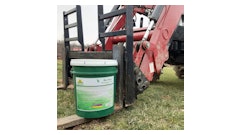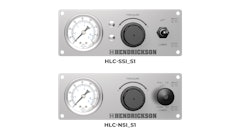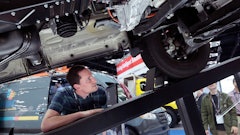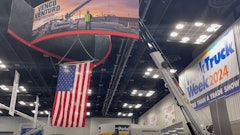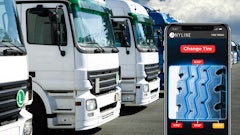
When a mechanics truck shows up on a jobsite, there is usually pressure to rapidly get the equipment fixed or complete the task. But it may be beneficial for the technician to invest a little time up front to properly prepare for any required lifts. Injury or ancillary equipment damage can quickly exceed the costs it takes to properly prepare for the lift.
A Safe Mindset
A technician really needs to develop a safe mindset in order to avoid accidents. “Many crane accidents are the result of multiple things going wrong at the same time,” says Tim Davison, product manager, Stellar Industries. “These oftentimes occur because we all have a tendency to ‘get used to,’ or become complacent with, our jobs. When we get accustomed to a task, it becomes second nature.”
Consider the typical service call. “We drive to the job, we pull up to a piece of equipment, we set the stabilizers, we position the crane, make a pick, stow the crane and away we go,” says Davison. “But do we make ‘safety’ part of our job? If we modify the way we think, apply common sense, and make our first thought ‘what is the safest way to do this’ every time, during every aspect of our job, then we will create a habit of safety. We make safety second nature.”
Often, accidents happen despite the technician’s training and skill level. “We can drill into an operator to observe proper ground conditions or look for overhead power lines all day long, but until the operator takes responsibility for their own safety, and makes it their first thought every time, hazards will get missed,” says Davison.
Get Qualified
Technicians do need to receive the appropriate training before being allowed to operate a mechanics truck crane.
“Whenever any operator uses a piece of equipment, they should be at a minimum, qualified on the equipment,” says Dave Foster, vice president of manufacturing and engineering, and a certified crane trainer, Venco Venturo Industries. “Operators should read and understand the owner’s manuals with relation to setup using stabilizers which are fully deployed and set on firm, level ground. Venco Venturo Industries LLC fully endorses the national certification program offered by the National Commission for the Certification of Crane Operators (NCCCO), and will prepare candidates for the CCO certifications examinations.”
There are set standards that outline proper crane operation. “To operate the crane, the technician must conform to qualifications as specified by ANSI B30.5, Chapter 5-3, as well as OSHA CFR 1926 Subpart CC,” says Terry Cook, product manager of commercial products at Iowa Mold Tooling Co. (IMT). “Operators commit an OSHA violation when they do not follow crane manufacturer instructions when performing a lift. The most common safety violation we see with service cranes is failure to properly deploy stabilizers to maintain stability.”
The crane also needs to be in proper operating condition. “Understanding the importance of pre-shift and monthly inspections of the crane is paramount for a safe and proper working piece of equipment,” says Foster. “Load charts and stability charts are always provided to ensure the operator understands that a lift should be within the crane’s capacity.”
It is up to the operator to understand all application regulations for their particular operating environment. “Operators should always know the OSHA regulations when working around power lines and the minimum distance requirements along with any possible underground utilities, voids, etc.,” says Foster. “Operators should also be aware of their surroundings and any unauthorized personnel within the lift zone. Part of this knowledge will prevent anyone from standing below the boom or under the crane.”
There are many aspects to operating a mechanics crane safely. “The operator wants to avoid instability that might tip the truck, have a quick shift of the load, dropping the load, hitting power lines — anything that may lead to personal injury or damage to the property,” says Nathan Schiermeyer, engineering manager at Maintainer Corp. of Iowa.
“It begins by knowing the basic information regarding the lift and planning accordingly,” Schiermeyer comments. “The operator needs to know the weight of the lift and how the lift will be [performed]. The operator must also look ahead to where they may be swinging the load.”
Jobsite preparation is an extremely important factor in establishing a safe work environment. “Technicians should plan lifts carefully and watch for hazards such as power lines, bystanders, overhead obstructions or excessive wind,” says Cook. “They should set up on a solid, level surface where it is impossible for the crane to come into contact with electricity in the fully extended position.”
“A firm base and consistently level conditions are critical for safe crane operation,” says Schiermeyer. “Outrigger deployment helps greatly in this regard. On Maintainer truck bodies, the outrigger control center is mounted in the center rear of the truck. This keeps the operator away from the outriggers during deployment, yet it also gives visibility to the outriggers on each side of the truck. This greatly reduces the chance of crushing someone’s foot under the outrigger apparatus.”
Never take shortcuts when it comes to stability. “If the mechanics truck is equipped with stabilizers, they must be properly deployed before operating the crane,” says Cook. “Also, all personnel should be clear of the stabilizers before they are deployed.”
Many problems creep up because the operator doesn’t understand the true weight of the component being lifted. “Before a load is lifted, operators should determine the total weight of the load, which is the sum of the load’s weight and the weight of any load-handling device,” says Cook. “Once the total weight is determined, they should use the crane capacity chart to make sure all lifts are within the crane’s rated capacity. They should position the truck with these capacities in mind and avoid any overhead obstructions that could impair the lift.”
There are tricks to help increase operator precision. “When precisely positioning a load, operators should keep their load as low to the ground as possible and perform all crane and load movements slowly and smoothly,” says Cook.
Always maintain line-of-sight with the load. “Crane operators should never perform a lift when they cannot see their load,” says Cook. “If visibility is obstructed, an operator should use a signal person who has a clear view of the load and can communicate with the operator. Operator signals may be visible (for example, hand signals), audible (for example, vocal or some other sound) or another agreed-upon method.”
Understand crane controls
The operator needs to understand the controls available for the particular crane they are using and how these controls can be used to safely perform the lifts.
“For crane operation, Maintainer offers a wireless remote,” Schiermeyer points out. “The remote allows the operator to stay a safe distance from the load. In fact, Maintainer uses an external antenna for extended crane range, including around obstacles.”
There are usually backups to remote controls. “If the crane remote fails (i.e., dead battery) or is lost, safe crane operation is still possible,” says Schiermeyer. “Maintainer trucks offer proportional manual controls. These controls are center-mounted on the body, not on the crane itself. Manual crane controls are still hydraulic overload protected to prevent accidental over-lifting of the crane. Maintainer cranes have a tamper-proof overload system whereby the user cannot bypass or adjust the pressure switch in the lift cylinder.”
Most manufacturers offer an overload prevention system that helps operators avoid getting loads in dangerous positions that exceed the capacity of the crane.
“Maintainer cranes also offer an Advanced Crane Control (A.C.C.) system,” says Schiermeyer. “The system uses sensors to monitor the crane and lift. The A.C.C. will reduce the speed of functions if making an out-of-level pick. The A.C.C. warns the operator and reduces the likelihood of stability loss. The A.C.C. also prevents crane operation if the truck is more than 6.5° out of level.”
“All IMT telescopic cranes feature an overload protection system that prevents over-lifting the load chart,” says Cook. “IMT Series III hydraulic telescopic cranes — the 6000, 7500, 8600, 9500, 10000, 12000 and 14000 models — come equipped with a snubbing feature that slows down the rate of crane operation when the crane consumes 90% of rated load. Capacity indicator lights on our fully proportional pistol grip radio remote control tell the operator how much crane lifting capacity has been consumed. When the crane consumes a certain capacity level, the light for that level illuminates. For example, when the crane consumes 20% of rated capacity, the 20 light will illuminate, and when the crane consumes 60% of rated capacity, the 60 light will illuminate.
“If the crane consumes 90% of rated load, an automatic safety feature reduces crane operating speed to 50%,” he continues. “Once the crane consumes 100% of rated capacity, no crane operations will work except those that reduce the load moment of the crane — raising the boom, retracting extensions and lowering the winch.”
The Stellar CDTplus crane control system provides real-time information to help the operator think about how they can best do their job safely — such as how much more weight can be lifted or how much farther the crane can reach. This system supplies real-time lift data to the LCD screen on the crane operator’s handheld remote device. It provides current weight being lifted, current reach, current angle, remaining weight and maximum reach available with that current load. When 80% of maximum capacity is reached, vibrations within the handheld remote begin and will alert the operator of approaching maximum capacity without having to take eyes off the load, which can be critical when in a tight location. As the load gets closer to 100%, the speed and cycle of the vibrations increase to indicate to the operator the impending maximum capacity. The LCD screen will also display the current percentage of load.
If maximum capacity is reached, the crane will go into overload shutdown until the extensions are retracted, the load is adjusted or the Boost mode is activated. The boost mode allows the crane to pick at 118% capacity for 30 seconds to assist in completing the job. Having the maximum capacity alert system and boost mode ability helps to ensure the operator is not picking up more than what the crane and service truck are designed to do, helping to eliminate some of the risk associated with a suspended load.
The Stellar CDTplus system is also equipped with a Safe Mode. If a safety monitoring device becomes damaged or inoperable for some reason, the crane senses it and will slow itself down until repaired.
But these are just a few tips and features integrated into today’s service cranes to keep operators safe. “Other things to think about for safe crane operation include warning labels. Warning and information decals (such as load charts) need to be secured and legible. Faded, scraped or missing decals need to be replaced,” says Schiermeyer. “Lighting can be very important for greater visibility at night or dark conditions. Maintainer offers a variety of LED-mounted and remote floodlights for use on the jobsite. Operator safety training on a regular basis is a great idea to understand your equipment and be on the lookout for potential hazards.”













